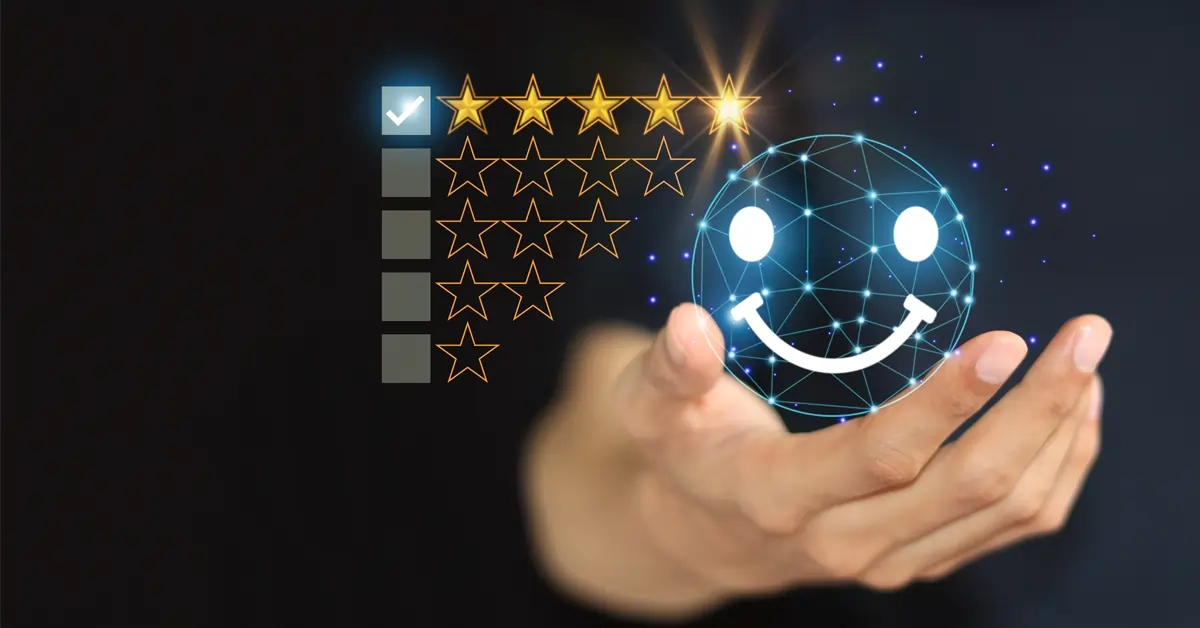B2B Customer Journey Mapping – What It Is & How to Do It Right?

Imagine trying to find your way around a new city without a map. You might take a few wrong turns, miss important landmarks, or get completely lost. In the B2B world, your customers feel the same way when doing business with you isn’t easy to understand.
That’s where B2B customer journey mapping comes in—it’s your guide to understanding what your buyers experience at every step. It’s not just about making the process smoother; it’s about anticipating their needs, addressing concerns, and guiding them effortlessly from interest to loyalty.
In this blog, we’re going to help you create a buyer journey that keeps customers happy and on track.
Table of Contents
- What is B2B Customer Journey Mapping?
- Why Is B2B Customer Journey Mapping Important?
- Key Stages in B2B Customer Journey Mapping
- How to Map Your B2B Customer Journey?
- Common Challenges in B2B Customer Journey Mapping
- Easily Map Your B2B Customer Journey
What is B2B Customer Journey Mapping?
B2B Buyer Journey Mapping is like following a buyer’s path from the moment they realize they need something to when they finally make a purchase.
Imagine you are a company selling software. A potential buyer might first look for general info, then compare different tools, and finally decide based on demos or pricing.
Mapping this journey helps you know what they need at each step—so you can offer the right content, answers, or demo exactly when they’re looking for it.
Why Is B2B Customer Journey Mapping Important?
1. It reveals the hidden touchpoints
B2B buyers do extensive research before they even reach out. By mapping out their journey, you can create content that answers their questions early on. This helps build trust early on, positioning you as the expert they need.
2. It helps you tailor your communication
In B2B, several stakeholders are involved in the buying process, each with different priorities. The CFO might care about ROI, while the end user wants to know how easy the solution is to implement. With a clear map, you can speak directly to each group’s needs, making your pitch far more compelling.
3. It prevents frustrating roadblocks
Mapping the customer journey helps you spot potential roadblocks before they become issues. For example, if a buyer gets stuck during a demo or trial phase, you can have support readily available to step in, ensuring they don’t lose interest.
4. It strengthens long-term relationships
Mapping doesn’t stop once the sale is made. Understanding the post-purchase journey means you can nurture that relationship with training, support, and check-ins that keep the customer engaged and loyal.
Key Stages in B2B Customer Journey Mapping
1. Awareness
Think of this as when a prospect first realizes they have a problem—like a team struggling to manage an overwhelming number of customer inquiries. They start looking for ways to fix it, maybe reading blogs or searching on Google to explore their options. They’re gathering as much information as they can from multiple sources to understand what solutions might be out there.
2. Consideration
Now, they’ve narrowed down a few options and are comparing them—like when you’re researching different tools to streamline processes. At this stage, the prospect might sign up for a webinar, dive into a case study, or request a demo to see how each option fits their needs. It’s like trying to figure out which smartphone has the best balance of features, battery life, and price.
3. Decision
Here’s where the prospect is ready to make their choice. They’ve compared features, considered pricing, and maybe gotten feedback from different stakeholders. It’s like a company deciding which software will best meet their needs after multiple rounds of discussion, pricing negotiations, and internal approvals.
4. Purchase
The deal is done, and the customer starts using the product or service. Think of this as the moment when you finally get that new tool or platform, and the integration begins—exciting, but with some learning ahead.
5. Post-Purchase
The focus now shifts to building a long-term relationship. The customer is onboarded, they might contact customer support for help, and regular check-ins ensure they’re happy. Think of this stage as nurturing a partnership—where feedback, upgrades, and the potential for renewals keep the relationship growing.
How to Map Your B2B Customer Journey?
1. Identify Key Stakeholders
Start by pinpointing everyone involved in the buying process. In a B2B setting, it’s rarely just one person calling the shots. For example, the head of procurement, the finance team, and even end-users all play a role in making decisions. Knowing who they are helps you tailor your messaging.
2. Gather Information
Dig into what drives these stakeholders. Are they motivated by cost savings, better efficiency, or innovation? Think of it like putting together puzzle pieces—you need the right details to see the full picture.
3. Create Customer Personas
With your information, build customer personas. Let’s say you’re selling software; one persona could be a tech-savvy IT manager looking for ease of integration, while another might be a CFO prioritizing ROI. These personas help you understand what matters most to each player.
4. Map Touchpoints and Channels
Now, figure out where and how your customers interact with your brand. Maybe they start by visiting your website, engage in email conversations, attend a webinar, and later chat with your sales team. It’s important to capture these moments so you know where to focus your efforts.
5. Visualize the Journey
Here’s where it gets fun—put everything together in a visual format. This could be a flowchart or diagram showing the customer’s path from awareness to decision-making. Think of it as the GPS for your sales strategy, showing where customers might take a detour or get stuck.
6. Measure and Implement Changes
Finally, don’t just map the journey and call it a day. Keep track of how well it’s working. For example, if you notice customers dropping off after a demo, maybe it’s time to tweak your presentation. Continuous improvement ensures the journey is smooth and efficient.
Common Challenges in B2B Customer Journey Mapping
1. Complex Decision-Making Process
Mapping the B2B decision-making process is like trying to get a group of people to agree on dinner—everyone has different priorities. In B2B, decisions often involve multiple stakeholders with varying concerns. For example, the IT team may focus on technical needs, while finance is more concerned with cost. Mapping these influences is challenging because it’s like piecing together a puzzle where each piece represents a different person’s input.
2. Long Sales Cycles
The B2B sales cycle can feel like planning a long, drawn-out event. Unlike quick B2C transactions, B2B deals take months, sometimes years, with numerous touchpoints like demos, trials, and negotiations. Capturing every interaction across this lengthy process can be tricky but is essential to understanding the full customer journey.
3. Data Silos
Data silos in an organization are like trying to plan a family reunion without access to everyone’s contact info. Different departments hold valuable customer data that isn’t easily shared. For instance, marketing may have insights on lead generation, while sales knows client interactions. Without integrating these, it’s hard to map the entire journey effectively.
4. Shifting Customer Expectations
B2B customer expectations are constantly evolving, like trying to hit a moving target. What a client needed at first may shift as their business grows. For example, they might start by wanting basic functionality but later expect more personalized solutions. Regularly updating journey maps ensures you stay relevant and aligned with these changing needs.
Easily Map Your B2B Customer Journey
While mapping the B2B customer journey comes with its challenges, there are ways to turn them into opportunities.
When you tailor your communication to each decision-maker’s needs, you’re not just solving a problem—you’re building trust and alignment. Keeping prospects engaged during long sales cycles with personalized follow-ups helps you stay front and center.
Breaking down those pesky data silos with a unified CRM brings your teams together. This ensures a smoother, more connected experience for your customers.
By regularly updating your journey map to meet changing customer expectations, you stay agile and ahead of the game.
When you put these solutions in place, journey mapping transforms from a complex task into a powerful tool that builds stronger relationships, boosts loyalty, and drives long-term success.
Related Post
Copyright © gocustomerexperience.com. All Rights Reserved.




